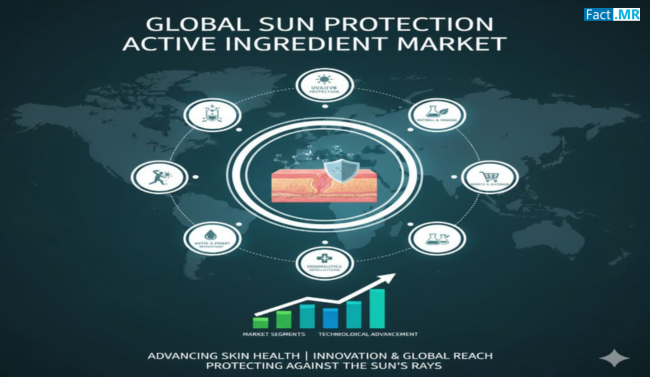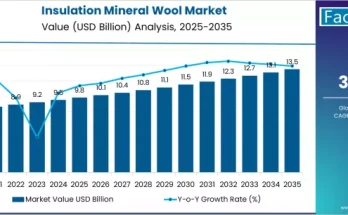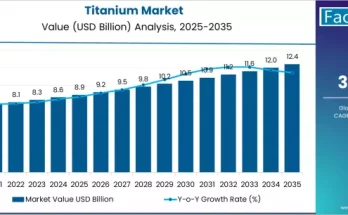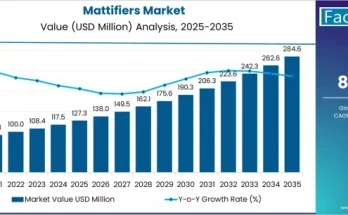The sun protection active ingredient market is rapidly evolving as consumers become more aware of the harmful effects of ultraviolet (UV) radiation on the skin. Active ingredients in sunscreens and other sun care products play a critical role in shielding the skin from damage, including sunburn, premature aging, and the risk of skin cancer. As the beauty and personal care industry expands globally, demand for effective, safe, and innovative sun protection ingredients is increasing across multiple regions.
Market Overview:
Sun protection active ingredients are essential components in formulations designed to absorb, reflect, or scatter UV rays. These ingredients can be chemical, such as avobenzone and homosalate, or physical, like titanium dioxide and zinc oxide. Advances in research and development have improved the efficacy, stability, and safety of these ingredients, enabling manufacturers to offer products that provide broad-spectrum protection while remaining gentle on the skin. These innovations also allow for integration into various product formats, including lotions, creams, sprays, and after-sun formulations.
Regional Insights:
North America is a leading market for sun protection active ingredients, driven by high consumer awareness, strict regulatory standards, and a strong presence of major cosmetic and pharmaceutical companies. Europe follows, with countries like Germany witnessing growing adoption due to outdoor lifestyles and increasing emphasis on preventive skin care. Asia-Pacific, particularly China, is emerging as a key growth region due to a flourishing cosmetics industry, rising middle-class population, and growing concern for sun safety. Regulatory initiatives and increasing disposable income in this region further support market expansion.
Key Trends & Forecast:
- Rising Awareness of UV Risks:Increasing knowledge about skin cancer and sun-induced aging is encouraging consumers to adopt protective products, driving the demand for high-quality active ingredients.
- Innovation in Natural and Organic Ingredients:With the growing preference for natural and organic personal care products, manufacturers are developing sun protection ingredients derived from botanical sources. This trend is gaining traction, particularly among health-conscious consumers.
- Advancements in Broad-Spectrum Formulations:Modern formulations aim to provide protection against both UVA and UVB rays while ensuring photostability, safety, and cosmetic elegance. These advancements enhance product appeal and effectiveness.
- Male Grooming and Youth Market Expansion:Rising interest among men and younger demographics in skin protection and anti-aging products is boosting the market for sun protection active ingredients.
Applications & End-Use Outlook:
Sun protection active ingredients are employed across a wide range of products:
- Sunscreens:The primary application, offering protective coverage during outdoor activities.
- After-Sun Products:Formulations containing active ingredients help repair skin and prevent damage post-exposure.
- Cosmetic Products:Incorporation into daily skincare and makeup ensures ongoing protection without compromising aesthetics.
- Dermatological Treatments:Ingredients are used in therapeutic products designed for sensitive or at-risk skin types.
Opportunities in Emerging Markets:
Emerging economies, particularly in Asia-Pacific, present substantial growth opportunities. Rising consumer awareness, increasing urbanization, and expanding beauty and personal care markets are contributing to higher demand for sun protection products. Local manufacturers and global brands are investing in product innovation, marketing, and distribution channels to capitalize on these opportunities.
Challenges & Market Restraints:
While demand is increasing, certain challenges remain:
- Regulatory Compliance:Different countries have varying regulations regarding active ingredients, requiring manufacturers to meet strict safety and labeling standards.
- Ingredient Safety and Efficacy Concerns:Some chemical ingredients face scrutiny for potential skin irritation or environmental impact, prompting the need for safer alternatives.
- Competition from Alternative Sun Protection Methods:Physical barriers, clothing, and behavioral measures may reduce dependence on chemical or mineral sunscreens in certain markets.
Country-wise Insights:
China is witnessing strong growth due to rising consumer demand for sun care products and increasing awareness about UV protection. Germany continues to see high adoption rates, as outdoor activities and wellness-oriented lifestyles drive demand. The United States remains a significant market, supported by large cosmetic companies, high consumer awareness, and stringent regulations ensuring the efficacy and safety of sun protection ingredients.
Conclusion:
The sun protection active ingredient market is poised for continued growth, driven by increasing consumer awareness, innovation in ingredient formulations, and expansion of the global beauty and personal care industry. These ingredients are critical in providing effective sun protection, supporting skin health, and meeting consumer demand for safe, high-performance products. Manufacturers investing in research, natural formulations, and emerging markets are well-positioned to capitalize on this expanding sector and contribute to global sun safety initiatives.



